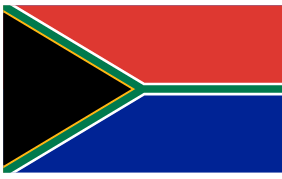StoneTurn Managing Director Phathu Makhadi highlights some of the most common procurement fraud schemes which have been prevalent in recent years in South Africa in this article for the Institute of Commercial Forensic Practitioners (ICFP). Also detailed below are some red flags to consider, which could be an indication of these procurement fraud schemes.
- Collusive bidding by contractors, also known as “bid rigging
- Bribes and kickbacks
- Split purchases
- Rigged specifications
- Unjustified sole source awards/ awards without following competitive processes
- Fictitious vendor
- Manipulation of bids
- False statements and claims by contractors or suppliers
- Leaking of bid information
- False, inflated or duplicate invoices
- Failure to meet contract specifications
- Excluding qualified bidders
- Conflict of Interest
- Change order abuse
- B-BBEE Fronting
The Third Special Report on the financial management of the government’s COVID-19 initiatives, issued by the Auditor General of South Africa (AG) in June 2021, found that there was an increased risk of procurement fraud as a result of the changing circumstances arising from the COVID-19 pandemic. This has been the case not only for government institutions, but also for corporate entities, according to a 20-year study on global economic crime and fraud.
The UK National Fraud Authority defines procurement fraud as “a deliberate deception intended to influence any stage of the procure-to-pay lifecycle in order to make a financial gain or cause a loss. It can be perpetrated by contractors or subcontractors external to the organization, as well as staff within the organization”.
The procurement of goods and services is an area most vulnerable to corruption and fraud, often involving huge loss of government or company revenue. In order to effectively investigate the related crime, one needs to understand the modus operandi of the corrupt offenders in the process to focus on areas where evidence can be discovered. One also needs to understand some of the common procurement fraud schemes and the related red flags and how these are evident in the investigation.
According to The International Anti-Corruption Resource Center (IACRC), the following are some of the examples of red flags for the above-mentioned procurement fraud schemes, which must be considered and followed up on when conducting an investigation:
1. Collusive bidding by contractors, also known as “bid rigging”
- Winning bids too high compared to cost estimates, similar jobs or industry averages.
- Losing bidders hired as subcontractors of the winning bidders.
- Unusual bid patterns.
For example, the bids are:
-
- Too high
- Too close
- Too consistent
- Too far apart
- Apparent connections between bidders: common addresses, personnel, phone numbers, etc.
2. Bribes and kickbacks
- A bribe needs not necessarily be in the form of money or cash, and often is not. Any benefit given or received with the intent to corruptly influence the recipient can be a bribe.
- Corrupt influence can be evident in the following scenarios:
- Qualifying an unqualified company/bidder
- Improper or non-competitive contract awards
- Paying a supplier too much for goods or services
- Buying too much of an item, or buying inappropriate items
- Continued acceptance of low quality or non-compliant goods or services
- As the corruption continues, the abuses often turn into fraud, such as fictitious invoices, with the parties conspiring to split the profits.
3. Split purchases
- Two or more similar procurements from the same supplier in amounts just lower than competitive bidding review limits.
- Unjustified separation of purchases, such as separate contracts for labor and materials, each of which is lower than competitive bidding limits, but when combined is higher than such limits.
- Sequential purchase orders or invoices lower than competitive bidding limits.
- Contracts under the competitive bid limit followed by change orders that increase amounts of the contract.
4. Rigged specifications
- Only one or a few bidders respond to request for bids.
- Similarity between specifications and winning contractor’s product or services. Specifications are significantly narrower or broader than similar previous requests for bids.
- Brand name included in request for bids.
- High number of competitive or sole source awards to one supplier.
5. Unjustified sole source awards
- Previously competitive procurements become non-competitive.
- No justification or documentation for non-competitive awards.
6. Fictitious vendor
- Paid vendors not on the approved vendor list.
- Vendors not listed in business or telephone directories.
- Invoiced goods or services cannot be located or verified.
7. Manipulation of bids
- Winning bid voided for “errors” in contract specifications and the job is re-bid.
- Acceptance of late bids.
- Bids are “lost” or misplaced.
- A qualified bidder is disqualified for questionable reasons.
8. False statements and claims by contractors or suppliers
- Discrepancies between reported facts and investigation results, for example in case of government tenders there is always a risk that the declarations made by the companies are not accurate.
- Refusal or inability to provide supporting documentation.
- Inadequate or apparently altered supporting documentation.
9. Leaking of bid information
- Poor controls on bidding procedures, such as failure to enforce deadlines or non-public opening of bids.
- Winning bid just under the next lowest bid.
- Acceptance of late bids.
- Bid due date extended unnecessarily.
10. False, inflated or duplicate invoices (either by supplier or procurement official)
- Inadequate, copied or apparently altered supporting documents.
- No purchase order for invoiced goods or services.
- Invoice prices, amounts, items description or terms exceeding or not matching:
- Contract terms
- Purchase order
- Receiving records
- Discrepancies between invoice and supporting documents.
- Duplicate invoices as follows:
- Multiple invoices in the same or similar amount to the same or related vendors.
- Same description of goods or services, amount, invoice and purchase order number.
- Total payments to vendor exceeding total purchase order or contract amounts.
11. Failure to meet contract specifications
- Work not done according to specifications -however signed off as though it has been done.
- Low quality, poor performance and high volume of complaints.
12. Excluding qualified bidders
- A significant number of qualified bidders fail to bid.
- Unreasonably narrow contract specifications.
- Allowing an unreasonably short time period to bid.
- Adopting unreasonable “pre-qualification” procedures.
- The failure to adequately publicize requests for bids, for example using only local publications, or failing to publicize the request for bids.
13. Conflict of interest
- Unexplained or unusual favoritism of a particular supplier or service provider.
- Procurement officials are silent partners or directors in supplier organizations whom they are purchasing from.
- Close socialization with and acceptance of inappropriate gifts, travel or entertainment by a procurement official from a vendor.
14. Change order abuse
- Numerous, unusual or unexplained change orders for a specific contractor approved by same employee.
- Pattern of low bid award followed by change orders that increase the price or scope of the contract or extend the contract period.
- Vague contract specifications followed by change orders.
15. B-BBEE fronting
- Companies pretending to meet the Broad-Based Black Economic Empowerment (B-BBEE) requirements to get tenders or be recognized as a B-BBEE supplier at a specific BEE level. This is more prevalent in tenders or contracts where there is a requirement that a bidder must have a certain B-BBEE status.
It is evident from the above that there are numerous ways of committing procurement fraud, or forms of procurement fraud, thus when investigating it, all options need to be considered. In investigating all the above procurement fraud schemes, collection of intelligence is crucial. This can be done by for example reviewing documentation, conducting data analytics, performing due diligence procedures and conducting interviews. An effective way of investigating any procurement fraud is being able to connect the dots.






